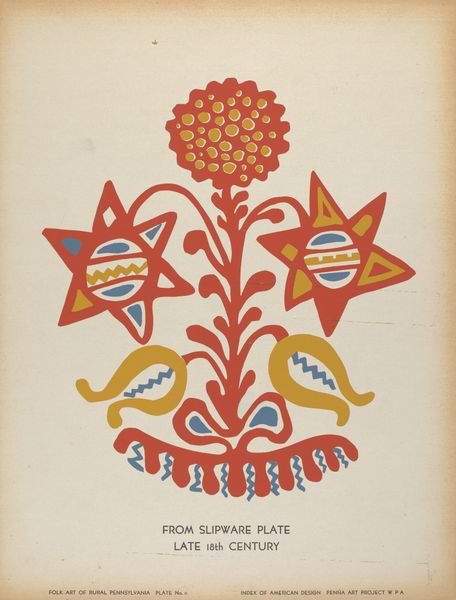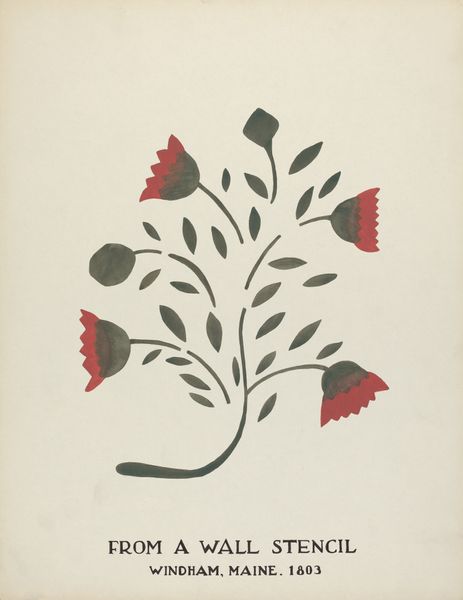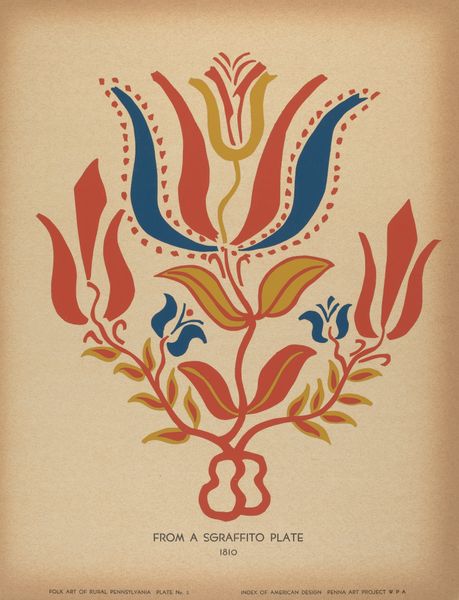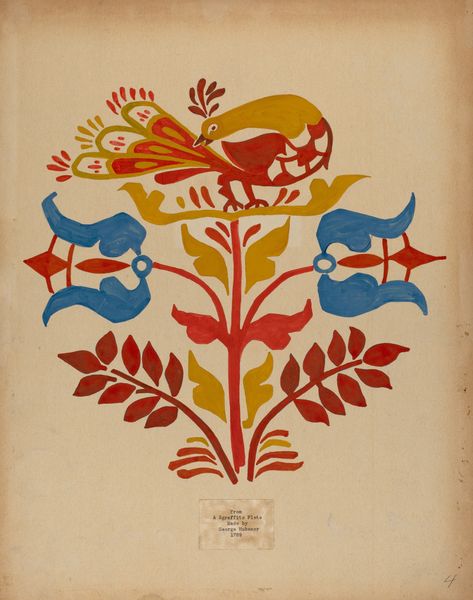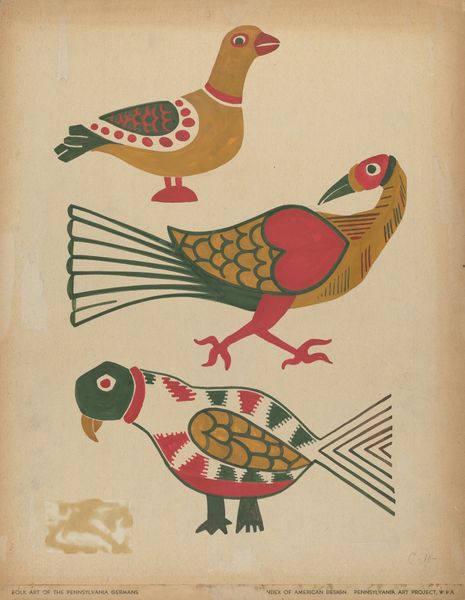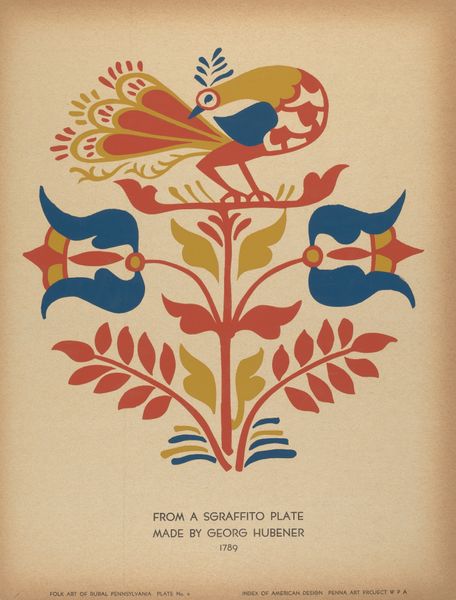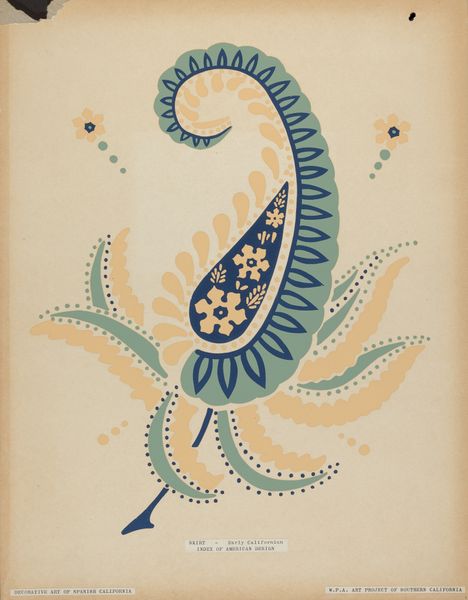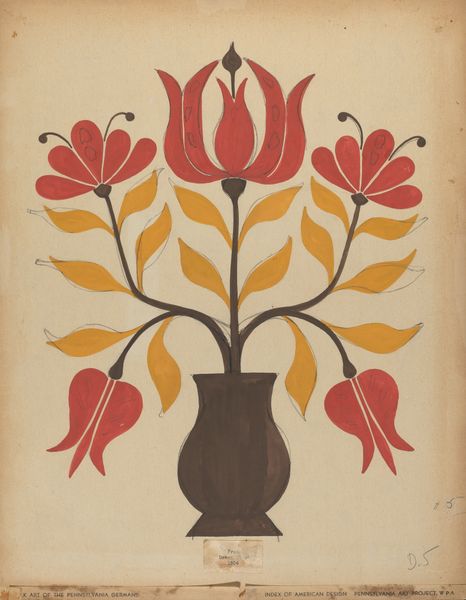
Drawing for Plate 14: From the Portfolio "Folk Art of Rural Pennsylvania" c. 1939
0:00
0:00
drawing, watercolor
#
drawing
#
water colours
#
figuration
#
watercolor
#
folk-art
#
regionalism
Dimensions: overall: 46 x 35.6 cm (18 1/8 x 14 in.)
Copyright: National Gallery of Art: CC0 1.0
Curator: This whimsical drawing, created around 1939, is titled "Drawing for Plate 14: From the Portfolio 'Folk Art of Rural Pennsylvania.'" It is rendered in watercolor, and the artist remains anonymous. What strikes you about it at first glance? Editor: The vibrancy jumps out—that stark contrast between the creamy paper and the flat, bold hues of red, yellow, and brown. It almost feels like a textile design waiting to happen. Curator: Indeed. Note the stylized bird perched atop what appears to be a decorated tree or pole. Observe the composition: the simplified forms, the deliberate flatness, and the absence of shading. These elements coalesce into a deliberate visual language. Editor: It's clearly derived from some utilitarian object. The labor and social context here speak volumes about rural craft traditions. I bet this piece relates to decorating utilitarian objects from that time, where color and repetitive patterns signified meaning within that Pennsylvania community. Curator: It absolutely exemplifies regionalism, presenting imagery easily digestible while remaining profoundly symbolic. Observe the almost naive rendering of the flora and fauna. They hint at themes of nature and bounty central to folk traditions. The visual syntax suggests that these are signs or glyphs meant to convey specific meaning. Editor: These colours are far from naivete; this arrangement echoes a culture grappling with material availability, isn’t it? How these pigments were made or sourced, how their saturation impacted the final work—such physical constraints really inform artistic choice, don't you think? Curator: Undoubtedly. This piece presents a harmonious fusion of function and aesthetic intent, resonating with simplicity while preserving its unique artistic statement. It encourages an investigation into a self-contained, very specific visual system. Editor: To consider that even within constraints, traditions such as this could become their own economic zone, reflecting the broader patterns of production of labor from rural Pennsylvania in its time... Fascinating, isn't it?
Comments
No comments
Be the first to comment and join the conversation on the ultimate creative platform.
